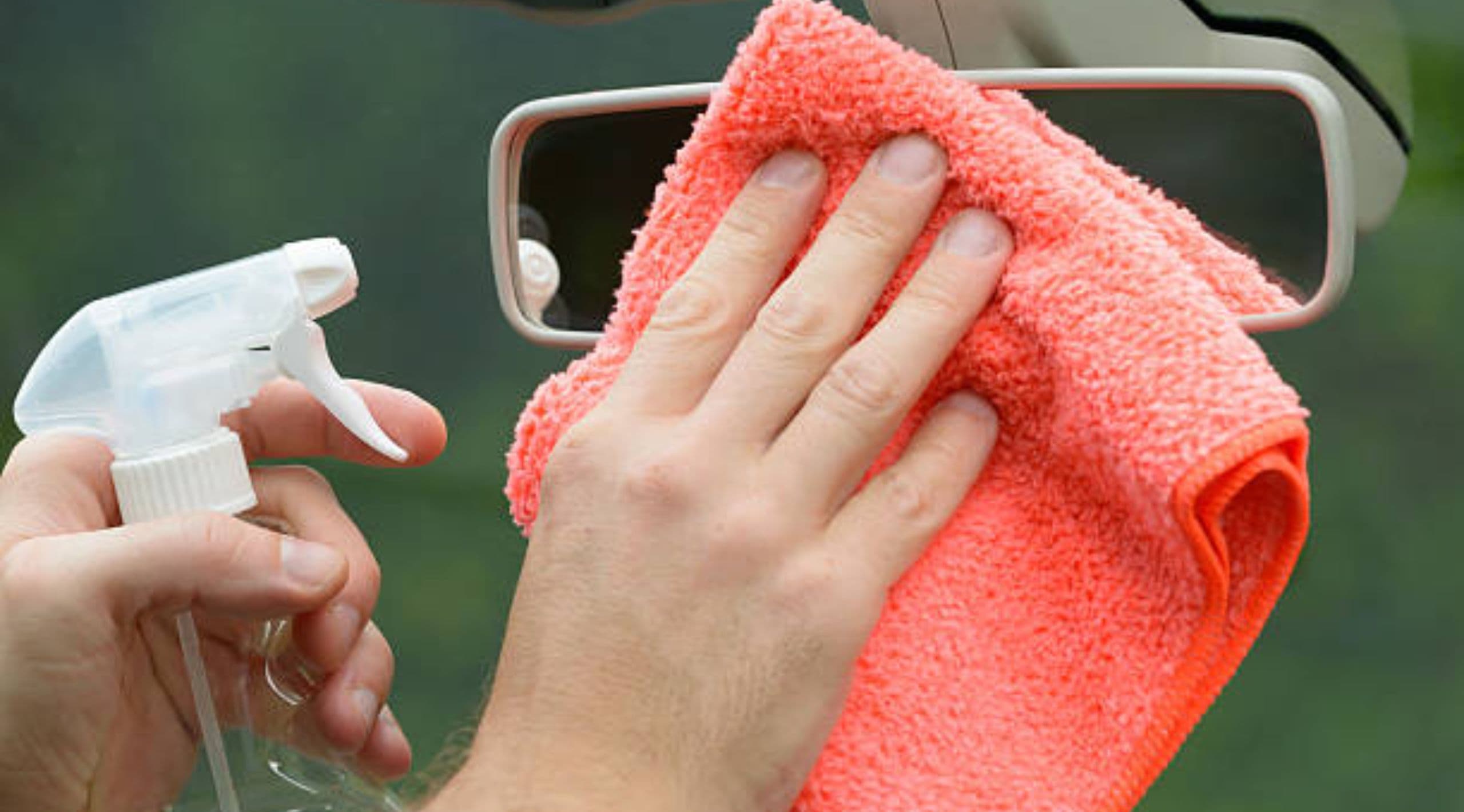The Importance of Clean Car Mirrors for Safe Driving
Driving safely is paramount, and one of the critical aspects of safe driving is ensuring clear visibility. Clean car mirrors play a significant role in this. When you know how to clean car mirrors effectively, you ensure that your rear view and side mirrors provide an unobstructed view of the road. A hazy or stained mirror can distort the image, leading to potential blind spots or misjudgments. By understanding the best way to clean mirrors, you not only enhance your car’s appearance but also contribute to road safety.
Moreover, dirty mirrors can reflect light in unpredictable ways, especially during nighttime or when driving under strong sunlight. This can create glares that momentarily blind the driver, increasing the risk of accidents. Additionally, accumulated dirt and grime can degrade the mirror’s quality over time, making replacements more frequent and driving more expensive. Thus, maintaining clean mirrors is not just a matter of aesthetics; it’s a crucial aspect of vehicle maintenance that every driver should prioritize.

What Are the Different Types of Car Mirrors?
There are primarily three types of car mirrors: the rear view mirror, and the car’s side mirrors which include the driver’s side and passenger’s side mirrors. Each has its unique challenges when it comes to cleaning. For instance, the interior rear view mirror might accumulate more dust, while side mirrors on cars are more exposed to external elements like grime, grease, and frost.
The rear view mirror provides a direct view of the road behind and is essential for monitoring traffic, especially when changing lanes or reversing. The side mirrors, on the other hand, offer a view of the lanes beside the car, helping drivers make safe lane changes and turns. Given their different positions and uses, each mirror type requires a slightly different approach to cleaning. For example, side mirrors might need more frequent cleaning due to exposure to mud splashes, especially during rainy seasons. Understanding these differences is crucial for effective cleaning and ensuring that each mirror serves its purpose optimally.
| Mirror Type | Function | Cleaning Challenges |
| Rear View Mirror | Provides a direct view of the road behind for monitoring traffic, especially when changing lanes or reversing. | More dust accumulation on the interior mirror. |
| Driver’s Side Mirror | Offers a view of the lane beside the car, helping drivers make safe lane changes and turns. | More exposed to external elements like grime, grease, and frost. |
| Passenger’s Side Mirror | Offers a view of the lane beside the car, helping drivers make safe lane changes and turns. | More exposed to external elements like grime, grease, and frost. |
Gathering the Right Tools and Cleaning Products
Before diving into how to clean a mirror, it’s essential to gather the right tools. A Lint-free cloth, microfiber towels, and paper towels are must-haves. These materials ensure that you don’t leave behind residues or scratches on the mirror surface. The choice of cleaning material can make a significant difference in the outcome, with microfiber being especially effective in capturing dirt and leaving a streak-free finish.
For cleaning products, vinegar is a natural cleaner that effectively removes stains, while ammonia can tackle tougher grime. However, always ensure that you’re using products safe for auto glass and coatings. Some commercial cleaners might contain harsh chemicals that can damage the mirror’s coating or the surrounding paint. It’s also worth noting that while household products like vinegar and ammonia can be effective, there are specialized car mirror cleaners available in the market designed specifically for auto glass. These products often provide deeper cleanliness and can offer additional benefits like water repellency. By investing in the right tools and cleaning products, you ensure that your mirrors remain clear and functional for a long time.
Step 1: Preparing the Mirrors for Cleaning
Before you delve into the cleaning process, it’s essential to prepare your mirrors. Starting with a clean slate ensures that you don’t inadvertently scratch or damage the mirror’s surface. Begin by gently brushing off any loose dirt or debris. For the exterior mirrors, a gentle application of suds or a specialized car mirror cleaner can help lift dirt without causing abrasions. This initial step is crucial as it sets the stage for a thorough and effective cleaning, ensuring that the mirror’s surface is primed and ready.
Step 2: Proper Techniques for Cleaning Interior Mirrors
The interior rear view mirror is often overlooked, but it’s just as vital for visibility. When cleaning, always spray your chosen cleaner onto a cloth first, rather than directly onto the mirror. This method prevents unwanted drips that could damage other interior components of the car. Employ a circular motion when wiping to ensure even cleaning and to avoid streaks. Over time, mirrors can develop a cloudy appearance, often due to deteriorating coatings. While this might seem concerning, a meticulous cleaning often brings back the mirror’s original clarity, making it look brand new.
Step 3: Removing Watermarks and Stains from Car Door Mirrors
Watermarks and stains can be a persistent issue, especially if left untreated for extended periods. These blemishes can obstruct your view and detract from the overall appearance of your vehicle. Fortunately, household items like vinegar can come to the rescue. By dabbing a cloth in vinegar and gently rubbing the affected area, most stains will lift with ease. For those more stubborn marks, a paste made from vinegar and baking soda can provide the extra cleaning power needed. However, always ensure you rinse the mirrors thoroughly after using any cleaning solution to prevent residue or potential damage.
Step 4: Dealing with Frost and Ice on Car Mirrors
Winter brings its own set of challenges for car owners, with frost and ice being chief among them. When your side mirrors are coated in a layer of ice, visibility is compromised. It’s essential to approach this issue with caution. Pouring hot water on the mirrors might seem like a quick fix, but it can lead to the glass cracking due to the sudden temperature change. Instead, opt for a commercial de-icer spray, which is formulated to melt ice quickly without causing damage. Alternatively, a homemade solution of water mixed with isopropyl alcohol can also be effective in de-icing your mirrors, ensuring clear visibility even in the coldest months.
Expert Tips for Achieving a Streak-Free Mirror Shine
Achieving that perfect, streak-free shine on your car mirrors can often feel elusive. However, with the right tools and techniques, it’s entirely attainable. Microfiber cloths are a game-changer in this regard. Unlike regular cloths, microfiber traps dirt and dust, ensuring that you’re not just moving grime around. After applying your cleaning solution, use a dry microfiber cloth and buff the mirror in a circular motion. This technique helps in evenly distributing the pressure and preventing streaks. If you’re still seeing cloudiness after cleaning, it might be an indication of deeper issues. It could be time to research how to clean a mirror that is hazy or even consult a professional to determine if a cloudy mirror can be restored.
How to Maintain and Protect Car Mirrors for Longevity
While cleaning is essential, protection is equally crucial. By safeguarding your mirrors from the elements, you can extend their lifespan and reduce the frequency of intensive cleaning sessions. One effective method is using a protective coating or sealant, which acts as a barrier against dirt, water spots, and other contaminants. These coatings can repel water, making it harder for stains to set. Additionally, it’s wise to conduct regular checks for any damages. Small cracks or chips can grow over time, so addressing them early can prevent more significant issues down the line. Timely replacements and repairs ensure that your mirrors remain functional and clear for years to come.
Troubleshooting Common Issues with Car Mirrors and Solutions
Car mirrors, like any other component, can face a range of issues. One common problem many drivers notice is water spots. Even after a thorough cleaning, these stubborn marks can remain. If you’re facing this issue, you might need to delve deeper into how to get water spots off car windows and mirrors. Often, a vinegar solution or specialized cleaning product can help. Another frequent concern is cloudiness, which can be due to aging or damage to the mirror’s coating. In such cases, understanding how to clean cloudy mirrors becomes essential. If the cloudiness persists, it might be time to consider a replacement.
Conclusion: Mastering the Art of Cleaning Car Mirrors
In conclusion, understanding how to clean car mirrors transcends mere aesthetics. It’s a matter of safety. Clear mirrors provide an unobstructed view of the road, ensuring that drivers can make informed decisions. With the right tools, products, and techniques, maintaining pristine mirrors becomes a straightforward task. Whether you’re grappling with stubborn stains or the challenges posed by frost, there’s always a solution at hand. By mastering the art of cleaning car mirrors, you not only enhance your vehicle’s appearance but also take a significant step toward ensuring a safer driving experience.

